The US State Department has approved a purchase of up to two hundred AIM-120D AMRAAM missiles for an estimated cost of $650 million.
The AIM-120 AMRAAM is a beyond-visual-range air-to-air missile capable of all-weather day-and-night operation. The fire-and-forget weapon employs active radar guidance and incorporates a datalink to guide the missile to a point where its active radar turns on to intercept the target.
The US Defense Security Cooperation Agency delivered the required certification notifying Congress of this possible sale today. The notice reads:
“The Government of the United Kingdom has requested to buy up to two hundred (200) AIM-120D Advanced Medium Range Air-to-Air Missiles (AMRAAMs). Also included in this sale are missile containers; weapon system support equipment; support and test equipment; site survey; transportation; repair and return support; warranties; spare and repair parts; publications and technical documentation; maintenance and personnel training; training equipment; U.S. Government and contractor engineering, logistics, and technical support services; and other related elements of logistics and program support. The estimated cost of the overall possible sale is $650 million.”
The agency say that proposed sale will ‘support the foreign policy and national security policies of the United States by helping to improve the security of a NATO ally which has been, and continues to be, an important partner on critical foreign policy and defense issues‘.
The principal contractor will be Raytheon Missile Systems.
It’s important to note that this notice of a potential sale is required by law and does not mean the sale has been concluded.


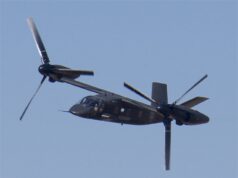
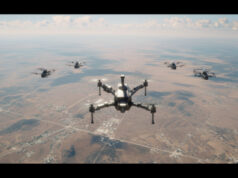
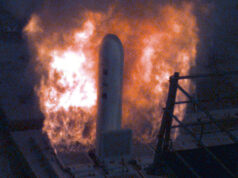




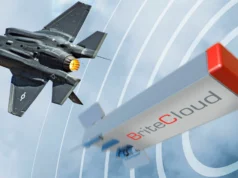
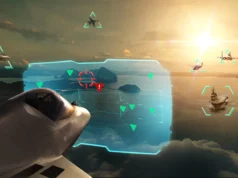
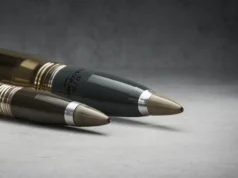

Am I missing something here, 3.5 mill a missile? Surely not!
It’s the special relationship ?
Same price the US pays.
Includes all the support and training, this is the D variant so new for the UK.
The D variant is significantly more capable and expensive the earlier models and sales have been limited to few countries
In April 2016 the RAAF became the first export customer for the AIM 120D with an order for 450 missiles, plus 34 AIM-120D instrumented air vehicles (AAVIs), six instrumented test vehicles and up to 10 spare AIM-120 guidance sections at an estimated cost of US$1.22 billion (A$1.32 billion).
As well as increased range and improved guidance systems the AIM120D’s fins have been reconfigured to allow internal carriage in the F35’s internal weapons bays. The RAAF will employ the D model across its combat aircraft fleet including the Super Hornets, Growlers and Lightnings.
Welcome to the party.
We will.have missiles systems by the boat loads …
Clearly these will be used for the F35Bs before they get Meteor, but will the also work on the Tranche 1 Typhoons?
They would be good for the two new Typhoon Squadrons with Tranche 1 aircraft to expand their range and capability but I don’t know whether the ‘plane hook up systems are in place. Anybody know?
Hi Geoffrey.
I can expand on that. I saw over on Gabriel’s blog a tweet from an RAF AVM that the 2 additional Typhoon units will actually be 3, for a time at least, and that there will NOT be only Tranche 1 units, the squadrons will use a mixed fleet.
Daniele – to add further no’s 9 and 12 Squadrons will be transferring from Tornado to Typhoon next year,no sign of any additional Typhoon orders unfortunately but a positive move nonetheless.Would have expected 9 Squadron to go to F35b to join its Dambuster bedfellows ,maybe that will happen in the future when the full compliment of F35’s are ordered.
Cheers Paul Yes 12 will be the joint Qatari unit I recall.
Sadly we must keep in sight this is NOT an increase. Retiring one fleet and using other existing fleet spread further to keep Squadron numbers up until F35 is operational in numbers.
Better than losing more number plates still.
Yes they’re for F-35B until c2025 when Meteor (should..) be integrated. But also will give the T1 Typhoons a decent medium/long capability until they retire. The only thing no-one seems to be sure of is if the existing 100+ AIM-120C5’s, which are still very capable (only the C-7 and new D are better) will get a re-life as has been previously mentioned. If that happens we’ll have a decent stock of missiles in. The old AIM-120B’s that the RAF inherited from the Sea Harrier retirement should be long gone (but you’d hope lurking in the back of some bunker somewhere, just in case…with 400 Storm Shadow…)
Any AIM-120B remaining were probably fired off in live fire exercises. Apparently the final year or so of Phantom operations there were lots of opportunities to fire off live missiles as the RAF ran down its stocks of AIM-7E Sparrow missiles that were exclusive for the type. Skyflash never worked that well with Phantom so it went to the F3 Tornado whilst the Phantom FGR2 and F4J got the Sparrow.
F me. At 3.25 million per unit someone is getting really screwed or it’s a well “set up” contract 😉
Of course the price is bloated to the maximum by a military-industrial complex. Those missiles could easily be manufactured for less than 200k per unit. But, it’s like with healthcare and education. People have to spend on it to prices bloat up. No one cares, it’s your taxpayer money 🙂
Does AMRAAM D have a MEMS seeker to go with the dual band datalink? That would certainly account for the added GCS costs, right there.
Last I heard, the BAe folks were seriously courting the Japanese for a Meteor/AAM-4 trade as the latter has an acknowledged AESA seeker (though the missile is 8″, not 7″) and the Japanese want a longer barge pole to smack some J-11s around with, now that they are getting the APG-82.
Of course, I remember a time, back when we hunted pterosaurs with flung rocks in the early-90s, that we were trying extra hard to make the British believe in ‘ERAAM’ as the preferred alternative to ‘BVRAAM’ because the U.S. didn’t like the idea of a 60-80nm ranged weapon from a subsonic launch devalidating all the money they had just put into the F-22.
There were two options, one was a D-shaped airframe. Similar to Have Dash but compatible with internal weapons bays (unlike say, ESSM-II).
The other took the remaining 6-7 inches from the directional warhead upgrade (the first 5 having already been filled with more motor pour in the C-5) and gave AMRAAM an 11″ longer motor overall with a much zippier, all boost, phase that supposedly pushed the weapon towards 4.6 at altitude.
If this is what eventually became the D and you look _realistically_ (by weight and volume) at the Meteor as what eventuated from BVRAAM, what you have is a substantively different performance class in which a Mid-course Mach of 3-3.5 for the air breather gives you range but at the cost of F-Pole as time to distance (the inlet screw valve opens up to recharge terminals however so absolute energy if not alpha performance remains the same).
Meteor will still beat AMRAAM at max pole but in the 15-25nm range segment which, to be honest, is still the most likely one, because of EID/EOID limits and number of potentially frattable air targets likely to be between you and X threat, at extended ranges, at night, in a possible mad dog condition over enemy GBAD; the AIM-120D becomes your preferred MRM as it gets down range in a hurry and you can let the threat come to you.
Meteor is going to be the sniper rifle you reach for in a look-in/reach-in condition against an A2AD S-400 matrix, like Syria. When you cannot approach Latakia but you still bag the bad guys, as they exit the baselane.
Datalink and Stealth as the ability to winkle your way around the threat FQ sensor cones and go for dominant positioning (supersonics) is still the best way to ensure your shot is the only shot. But it’s a question of can you duck and weave through a multi-emitter crosslap on ingress.
Ideally, a Meteor equipped platform, with a CAPTOR-ES or APG-81 illuminator is going to let you run a shot in, sub horizon, and because of the HFDR, still achieve a sizeable downrange, after lofting, while the illuminator does the midcourse from whatever amounts to safe standoff for the altitude.
Waiting to integrate the Meteor on the F-35 until 2025 sure puts a dent in the ‘open architecture’ model of weapons upgrades for the Panther.
Radar/Datalink capability and compatibility is going to be a really big deal in an NCW roll back of a high level GBAD because you can bet your Mortgage that the other team are going to be doing Mountain Top with Bars/Irbis/Belka cuing for 9M100 or 40N6.
Because that’s what’s going to get them OTH on hordes of JASSM-ER, Stormshadow and Blk.V Tomahawk.
Once the threat has the ability to loft 40-60 missiles, per battery, irrespective of LOS, small units of Su-35 or 57 start to make sense. They can bastion themselves up and fly all but naked with MSDM equivalents to knock down stealth-shot AMRAAMs while exploiting the genuine SAM battery at their feet for both added protection and serious SSPK magnification.
Just like we cued that SM-6 onto a lolo’ing CM awhile back.